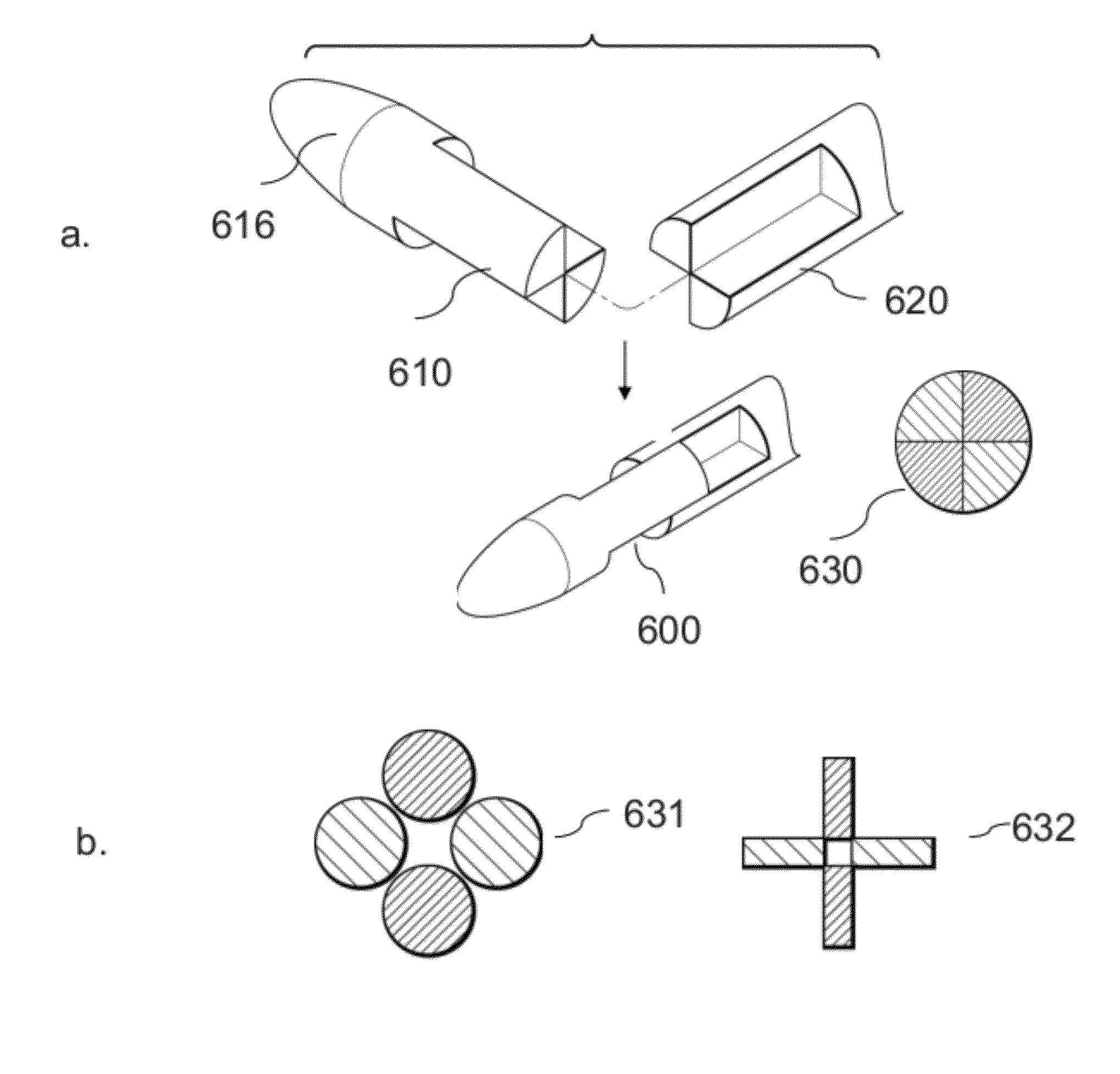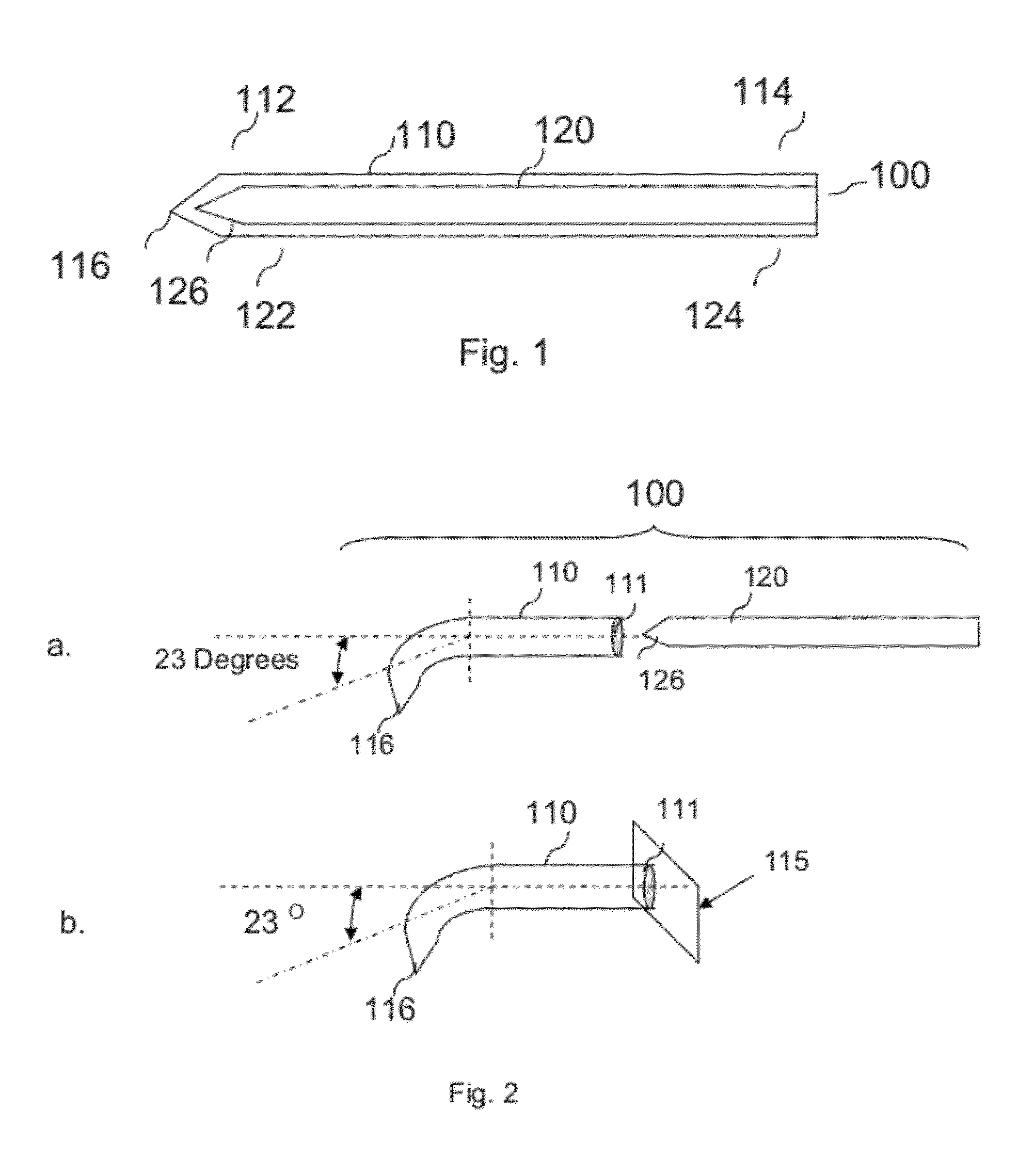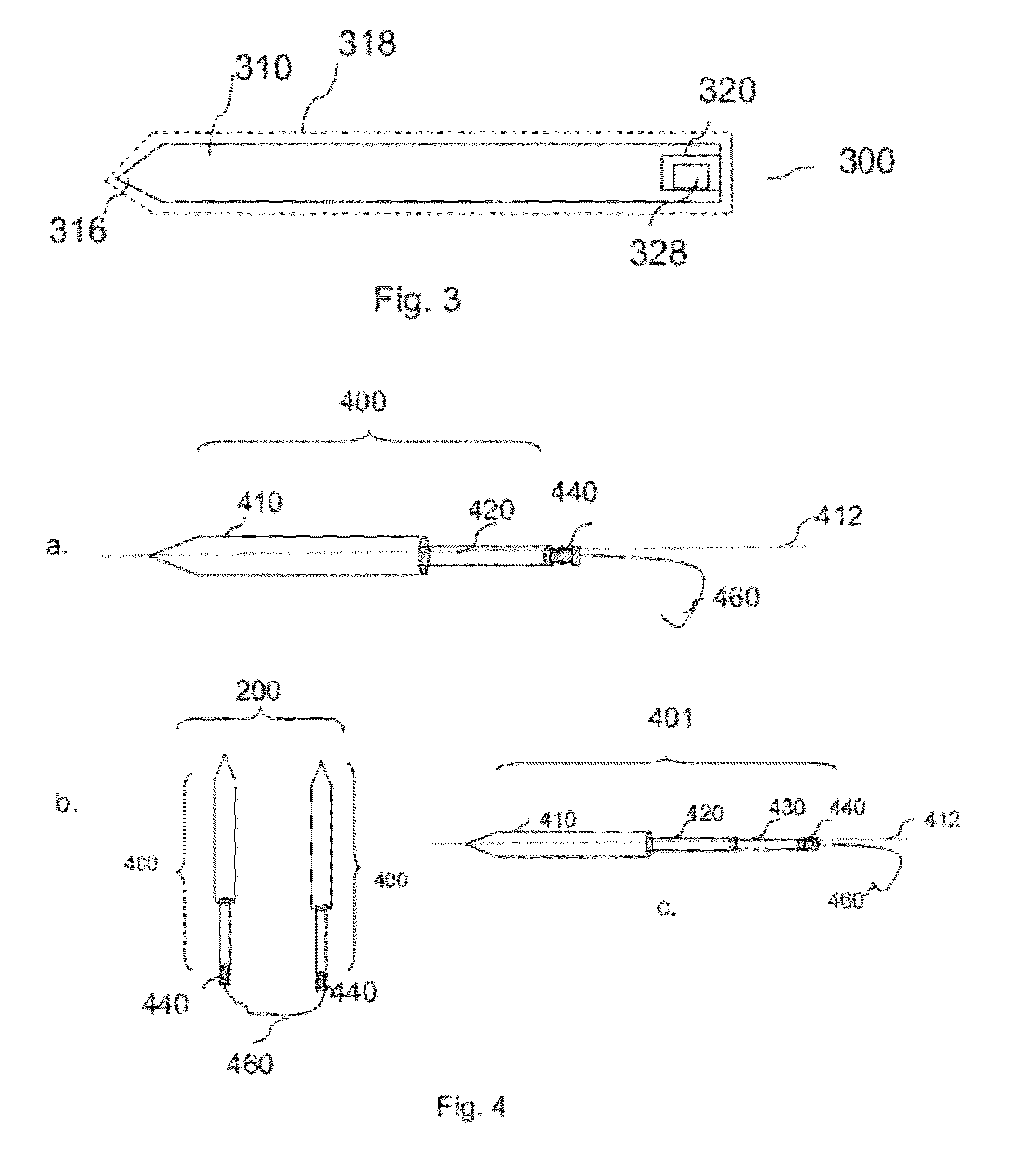Flight acceptable knitting needles
a technology of knitting needles and needle segments, applied in knitting, weft knitting, textiles and papermaking, etc., can solve the problems of the rigidity of commonly used knitting needles, and the inability to meet current tsa standards
- Summary
- Abstract
- Description
- Claims
- Application Information
AI Technical Summary
Benefits of technology
Problems solved by technology
Method used
Image
Examples
Embodiment Construction
[0031]In FIG. 1, a multi-segmented knitting needle 100 generally comprises a non-rigid segment 110 and a second segment 120, which is preferably semi-rigid. The non-rigid segment 110 has a distal end 112 (distal because it tends to point somewhat away from the torso of the user) and a proximal end 114 (proximal because it tends to point somewhat away towards the torso of the user). A needle point 116 is disposed at the distal end 112. The second segment 120 can be non-rigid or semi-rigid, and is preferably constructed to support the non-rigid segment and to add to the rigidity of the knitting needle. In this particular example, the second segment 120 has a distal end 122 and a proximal end 124. A needle point 116 is disposed at the terminal end 122.
[0032]In a preferred embodiment the non-rigid segment 110 is a flexible sheath having a lumen 111, and segment 120 is a foam rod that is configured to be slidably inserted into the first segment 110 to form the needle 100, as illustrated ...
PUM
 Login to View More
Login to View More Abstract
Description
Claims
Application Information
 Login to View More
Login to View More - R&D
- Intellectual Property
- Life Sciences
- Materials
- Tech Scout
- Unparalleled Data Quality
- Higher Quality Content
- 60% Fewer Hallucinations
Browse by: Latest US Patents, China's latest patents, Technical Efficacy Thesaurus, Application Domain, Technology Topic, Popular Technical Reports.
© 2025 PatSnap. All rights reserved.Legal|Privacy policy|Modern Slavery Act Transparency Statement|Sitemap|About US| Contact US: help@patsnap.com



